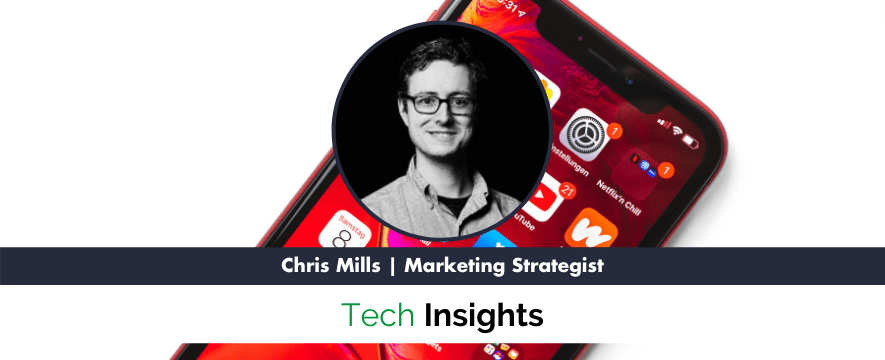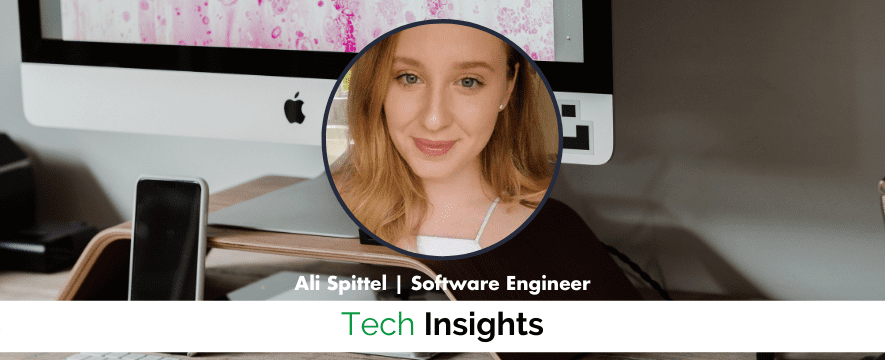The following insight was written by Chris Mills, Cofounder of Strongweek.
The iPod Touch changed my life. I was a college sophomore with three part-time jobs to make ends meet. Overwhelmed, I kept forgetting tasks, appointments, and homework assignments.
Then a friend suggested I use his old iPod Touch to keep track of things. He’d recently upgraded to an iPhone, and didn’t need the Touch anymore. (Yeah, I’m old. I had flip-phone in college.)
With the iPod, I stopped forgetting things. My grades improved. My easy distractability had held me back my entire life. But now, thanks to Apple, there was an app for that.
Today, I have my own Apple Developer account and just launched my first productivity app, Strongweek, on the iOS App Store. I can’t code an app by myself (yet) and I didn’t spend a dime on development.
The App Idea
The inspiration for Strongweek came to me when I saw the announcement that Wunderlist would be shutting down. (Actually, Wunderlist was bought by Microsoft, but for me, it was the same thing.) By then, I had been a smartphone user for several years and had accumulated thousands of tasks in Wunderlist. I searched the App Store for a replacement, but most mobile apps couldn’t compete.
I was once again overwhelmed with tasks. Every day, I’d get dozens of reminders for tasks I didn’t have time to do. I began pushing every task to Saturday at 9 a.m. I felt like I was in the flip-phone days all over again.
At work, my boss told me to forget individual tasks and due dates. She said I needed to know my top priorities for each week and month.

Attempting to Build it Myself
First I searched the IOS App Store. I wanted to find an app that would let me assign tasks to categories like “next month.” I was sure such a simple idea must exist already.
It didn’t (at least not on the iOS App Store). At their core, every to-do list app, from Remember the Milk to Todoist, was the same. Temporarily giving up on my app search, I began using a project board on Monday.com, along with a complex set of automations.
I began to wonder if I could build the app myself. Surely there was a WordPress or a Wix for mobile apps, right? I quickly learned that mobile apps are a lot more difficult to build than websites. There are some drag-and-drop mobile app builders, but they aren’t designed to build apps like custom to-do lists. Most no-code app builders convert static websites into mobile apps with a few basic interactive elements thrown in.
The best app builders I found were MIT App Builder and various clones like Thunkable. They cleverly bridge the gap between drag-and-drop and coding. Using these tools, I was able to build a rough version of my app. The only issue was that they couldn’t save and retrieve data from the phone. I gave up.
How much would it cost to get the app built for me?
I began searching for companies that could build my app for me. I didn’t know how much it would cost, but I didn’t think a to-do list app would be too expensive. Sure enough, there were thousands of results for mobile development firms. Some were big operations. Others were local mom-and-pop shops. None provided straightforward pricing.
I wasn’t surprised that pricing was hard to find. Mobile apps are complicated, and each one takes a different amount of time and manpower. The few quotes and estimates I was able to get weren’t encouraging. Pricing to develop a single-page, non-interactive mobile app ranged from $7,000 to $23,000. Most firms were more interested in building apps for other companies than individual hobbyists like me.
Fortunately, there was one more option: individual developers and freelancers. Websites like Fiverr and Upwork provided access to a range of developers with different skill sets and prices.
Freelance App Developer Pricing
Like app development firms, freelance mobile developers didn’t post clear, upfront pricing. Many charged by the hour, but I had no idea how many hours my app would take to build. Since most charged a couple hundred bucks an hour, my app could get expensive.
My other option was project-based work. I could pay in stages for each milestone and feature. I would start with a first payment for a proof of concept. I would make the final payment when the app was accepted to the iIOS App Store. Project-based estimates for my app ranged from $250 to $1750. (Want to learn more about app pricing? Check out “can you afford to hire an app developer” on Medium.)
What if a developer steals my app idea?
App developers are always looking for new ideas. Over the years, they’ve submitted millions of apps to Apple’s App Store, so it’s hard to think of something they haven’t tried before. The simpler the idea, the more likely it is to have been done hundreds of times already. I had to share my idea to get accurate cost estimates but worried that someone might create the app themselves before I even got started.
To my surprise, app developers were generally comfortable signing NDAs. I was able to speak with a few developers who were willing to sign an agreement before I shared the details.
Still, it’s worth noting that the moment an app is live on the App Store, people will be able to find it and copy the concept. I’ve had to get comfortable with the idea that someone might see my app and make their own version.
Choosing a Developer and Becoming Partners
The support and enthusiasm of the developers I spoke with for this project was inspirational. It was difficult to know who to hire. They were each smart, capable, and friendly. They each offered enthusiastic suggestions. I didn’t know enough about app development to know what technical skills to look for. Even looking at apps they had previously made didn’t help.
I settled on the developer who asked the best questions. Before he agreed to make the app, he quizzed me on UI choices, device compatibility, localization, and more. He also sent me a proof of concept, showing how he understood the idea and what he could build. We decided to form a partnership so that if the app grew popular, we could work on continuous improvements.
Designing the App
When I first spoke with developers, I put together a short proposal outlining the Strongweek concept. I also included several visuals. To help developers understand my idea, I’d mocked up what the app could look like.
In business, there’s no such thing as a rough draft. I had based the design in my proposal on the most popular to-do list apps in the iOS App Store. It quickly became the template for everything we did. As we built the app, the limitations of Apple’s mobile operating system and native UI forced us to stray from the initial designs. To create a to-do list app with a different concept than most task apps, we’d need to change the design or build a custom UI.
Using Adobe XD, I repeatedly tweaked the mock-ups to accommodate new features and solutions. The design strayed further and further from the images I’d shared with developers.
I’m lucky to have found a sharp developer. He’s able to understand my ideas for the app and has a lot of clever suggestions of his own. Most importantly, he thinks ahead and sees problems before they arise. (If you ever work with a developer, work with someone like this. Long-term, big picture thinking can save a lot of headaches.)
Right away, my developer/business-partner called me out on some big problems with my design.
“You want users to be able to assign tasks to categories like This Week and This Month. What if it’s the 29th?”
The more we worked on the app, the more unexpected problems we had to solve. Each problem seemed to generate more problems until my minimalist design felt cluttered with ugly but necessary features.
App Store Connect
Testing and releasing the app was almost as complicated as developing it. I found myself running to Best Buy for an up-to-date Mac so I could run the latest version of X-Code. Then I had to learn to navigate a strange and daunting world of profiles, app IDs, certificates, repositories, and archives. They were all required to move the code from the developer to me, to Testflight (the tool that allows developers to share apps for testing without releasing them to the general public).
Apple, for its part, assumes that anyone with a developer account already knows how to clone a Github repository. They assume you know where to find the Archive option in the Product menu. Most of the time, this is probably a fair assumption. For me, though, there was a steep learning curve. Among my many mistakes was using the IOS 12 Beta version, which left us stranded for weeks, unable to upload anything to App Store Connect for testing.
Beta-testers, end-users, and tilting at windmills
The moment I shared the Testflight link with my friends and family, a strange thing happened. I had roped in nearly everyone I could bribe or guilt-trip into being my beta tester, and I expected an immediate outpouring of enthusiasm. Instead, they bombarded me with confused and contradictory complaints.
- One beta tester for my to-do list app couldn’t figure out how to add tasks. When I pointed out the massive “+” button at the bottom of every page, he announced, “Oh I wondered what that was!”
- Another beta tester couldn’t wrap his head around the concept at all. He repeatedly asked for help adding due dates, even though the point of the app was that there were no due dates. I gave up trying to explain.
- A third complained that the app looked colorless and bland and the font was obviously too small.
- A fourth insisted that the app had too many colors and the font was obviously too big.
On it went. The only thing my beta testers had in common was that they all considered themselves to experts on the subject of app design. Each tester was certain that he or she had a uniquely sharp eye for color-schemes and user-experience.
Launch Day
Finally, the app was ready. All the major bugs had been fixed. Tests had been run. Regulatory questions about encryption and tracking had been answered. Checkboxes had been checked.
I filled in our app description, uploaded screenshots, and hit the bold, blue “submit” button at the top right-hand corner of my screen.
“Ding” went my Mac notifications. I had an email:
 Then we waited. Less than 24 hours later, my app was in the App Store.
Then we waited. Less than 24 hours later, my app was in the App Store.
Get Started
Ten years ago, Apple changed my life. I know it sounds corny, but I would not be where I am today without that old iPod Touch. So for me, Strongweek is more than a mobile app.
Have you ever thought “I wish there was an app for this?” Have you ever searched the App Store, and wondered why an app you were looking for didn’t exist yet?
If you’ve ever wanted to build a mobile app yourself, start now. It’s never been cheaper or easier to find partners, developers, and designers. You never know who else really wishes your app idea existed. Who knows — your app might help make someone’s life better.





